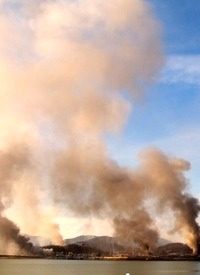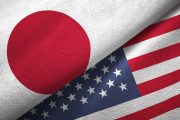
North Korea bombarded a South Korean island with a barrage of as many as 170 shells in the early morning hours of November 23. “I believe we should punish them severely to a point where they will never think of another attack,” the South Korean-based newspaper Chosunilbo quoted South Korean President Lee Myung-bak as responding in a Joint Chiefs of Staff meeting after the attack. Lee’s remarks were more restrained on his official presidential website, where he pledged to “retaliate against any additional acts of provocation in a resolute manner.”
South Korean sources reported that two South Korean marines were killed and 18 injured, along with three civilians wounded in the attack.
The shelling marked the second major North Korean attack against the South Korean military this year, and the first in which civilians were injured. In March of this year, a North Korean ship torpedoed a South Korean corvette, the Cheonan, in which 46 sailors were killed. After a military investigation concluded a North Korean torpedo had sunk the boat, South Korean President Lee promised “resolute countermeasures” to the attack, but withheld military reprisals.
The site of the recent attack, Yeonpyeong Island, is an eastern island in the Korean Sea about 10 miles off the North Korean coast. South Korea had been holding its annual military exercises there at the time of the attack. North Korea traditionally objects to this South Korean military training so close to its territory, and had lodged a letter of protest against the exercises earlier this week.
North Korea claims South Korea fired first since the annual drill was underway. “Despite our repeated warnings, South Korea fired dozens of shells … and we’ve taken strong military action immediately,” the official Korean Central News Agency acknowledged.
But the South Korean Joint Chiefs of Staff spokesman Lee Bung-woo countered: “Our military carried out its regular maritime fire drill not northward but southward in the West Sea. Firing artillery shells on a civilian area under this pretext is clearly an illegal act and violation of the armistice.”
President Obama immediately released a statement in support of South Korea, which has signed a mutual defense treaty with the United States. “The United States is firmly committed to the defense of our ally, the Republic of Korea, and to the maintenance of regional peace and stability,” Obama wrote. He also ordered the aircraft carrier U.S.S. George Washington to sail to South Korea from Tokyo for “military exercises.” The United States currently maintains 28,000 of its own soldiers as well as an unspecified number of nuclear weapons in South Korea and has stationed ground forces in South Korea since the Korean War (1950-1953).
Photo of smoke billowing from Yeonpyeong island: AP Images



